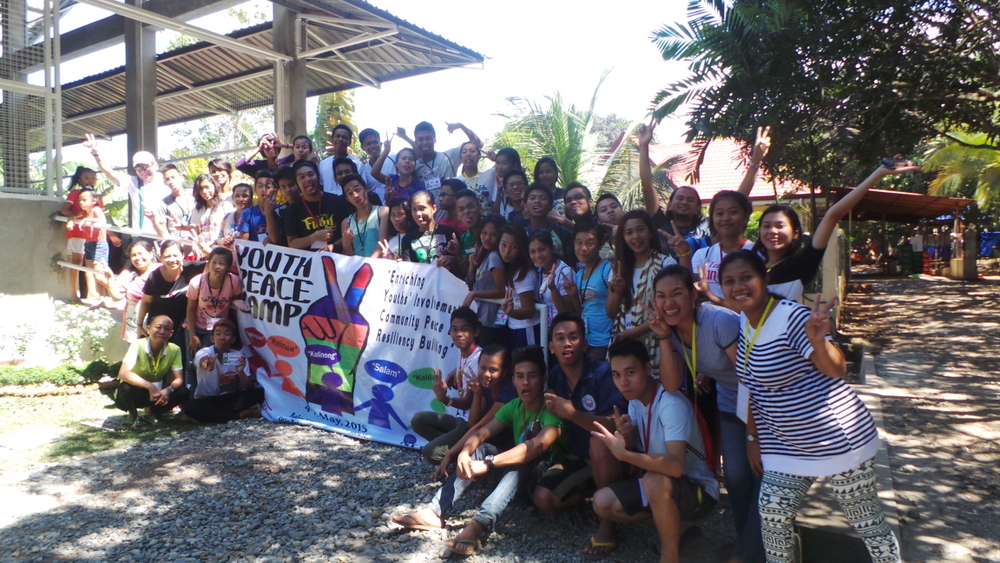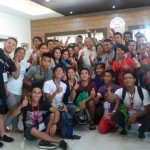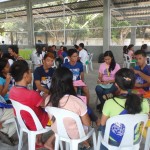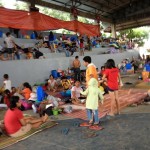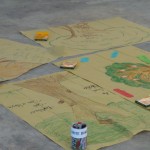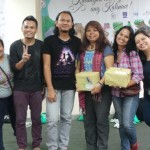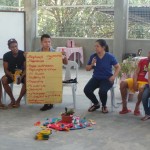by Charmaine “Xx” Dagapioso-Baconga
“Ang paghunong sa ‘vicious cycle of poverty and violence’, sama ra na sa ligid ng kung gusto nimo undangon ang pagtuyok, buslutan nimo kini,” said Gab, 15 years old, the youngest amongst the participants of Balay Mindanaw’s recently concluded Youth Peace Camp 2015. His statement was in response to Kaloy Manlupig’s challenge on how the youth can help stop the vicious cycle of poverty and violence. This is one among many conversations during the 2015 camp which had the theme “Enriching the Youth’s Involvement in Community Peaebuilding and Resiliency.”
The Youth Peace Camp was a three-day camping and learning experience in which young people from all over Mindanao lived in tents for four days and five nights. The camp aimed to provide spaces for the youth to talk about recent developments in national and local conflict situations and peace initiatives. In addition, it also aimed to impart them with leadership skills and develop their commitment to participants through workshops and exposure to Balay Mindanaw partner barangays in Cagayan de Oro with excellent community peace and resiliency building initiatives. Finally, the camp was designed for fun and meaningless togetherness that would enhance their shared learning experiences.
During the camp, the participants were able to identify critical issues in their communities and ways to act on them. Most identified the issues of drug addiction, teenage pregnancy, improper waste disposal, passive youth, poverty, lack of opportunities, lack of education and armed conflicts. They then drafted action plans that aim to change the situation through the active involvement of youth in environmental protection, community dialogues with barangay officials and key leaders, participation in local peace talks, implementation of livelihood programs and active involvement in community peace and development efforts.
Prior to formulating these plans, the youth campers first had to go through three days of experiential learning with emphasis on self-discover, team building and awareness raising on the realities that affect youth, society and peace. Some of the sessions included were those on inner peace, justice and reconciliation, leadership, local and national situationers, interfaith/inter-religious and intercultural dialogue, shifting paradigms towards social transformation, and dismantling the culture of violence.
To give them a glimpse of reality, the campers also interacted with their choice of four communities: mangrove growers in Barangay Bonbon, the Fight Against Drug Addiction project of the youth in Barangay Balulang, landfill communities in Barangay Carmen, and the Ecoville relocation site of Sendong survivors in Barangay Lumbia. These four areas served as examples of good leadership and well-organized communities. During the visits, the participants were inspired by the stories of different community leaders and learned strategies that they may be able to apply to their own communities.
During the interfaith dialogue session, the campers shared to each other their personal experiences with discrimination and with discriminating others because of their identity, religion and culture. Through this, they were able to realize that it is indeed possible for everyone to live together in harmony so long as everybody would respect and understand each other. One of the participants shared that peace can only be achieved if each one takes responsibility of accepting differences and appreciating commonalities.
The camp was also an opportunity for the youth to share their thoughts and realizations and appreciate the importance of being socially aware of the socio-political, economic, cultural and peace situation. More importantly, they also became more conscious of their vital role in social transformation.
The campers also had an opportunity to share perspectives, make friends and share their talents.
As the camp came to a close, the young participants expressed gratitude for the opportunity to be together. They thanked Balay Mindanaw for organizing the camp and their own barangays for giving them the opportunity to come. In the midst of their differences, conflicts and arguments during the activities and discussions, tey realized the need to understand and respect differing ideas, opinions and contexts.
They youth brought home with them not only their learnings but also the special gifts of friendship and trust. Finally, they committed to strengthen the relationships they have built during the camp and held on to the challenge of becoming proactive in building peace amidst their diversity.
